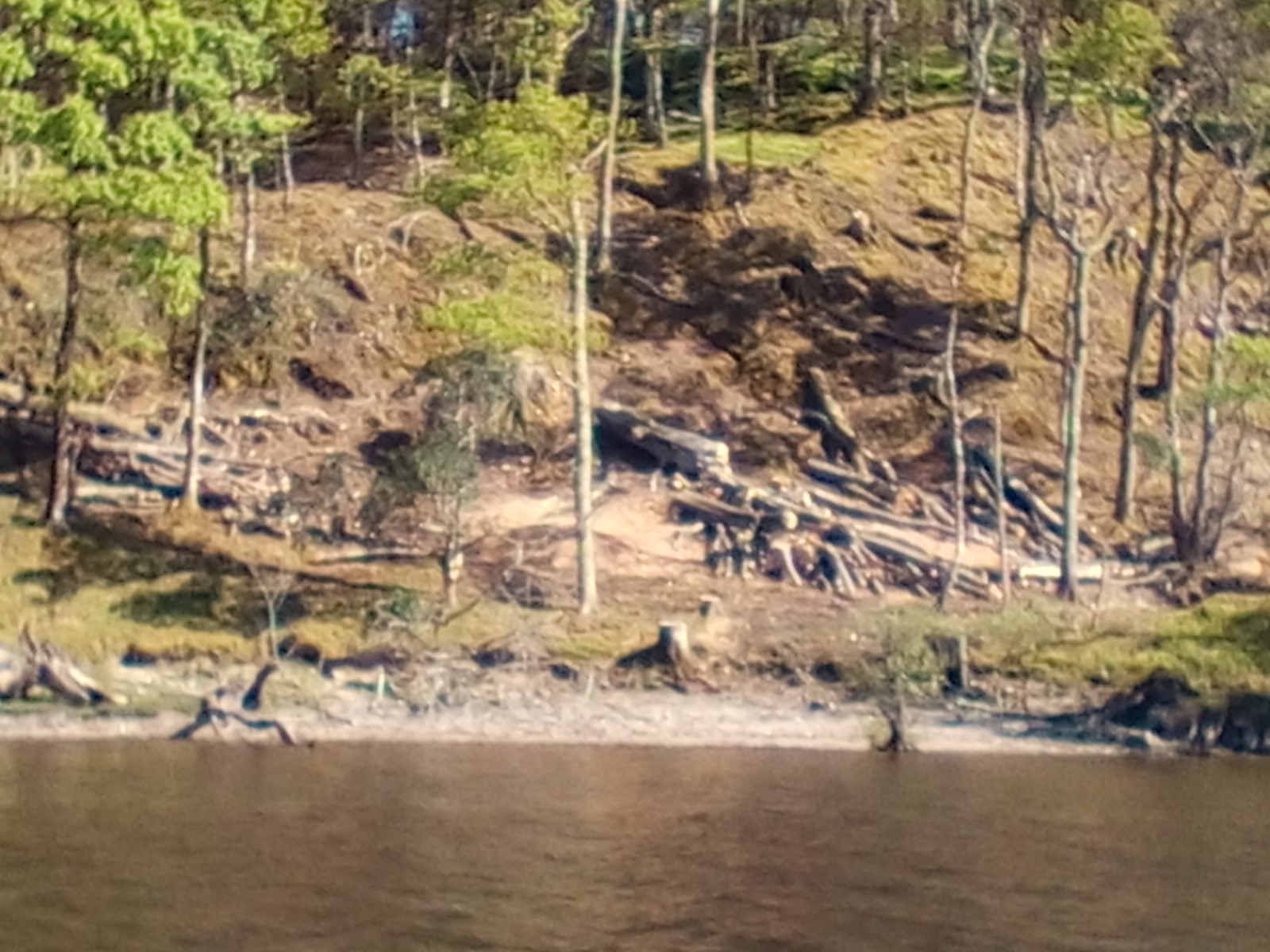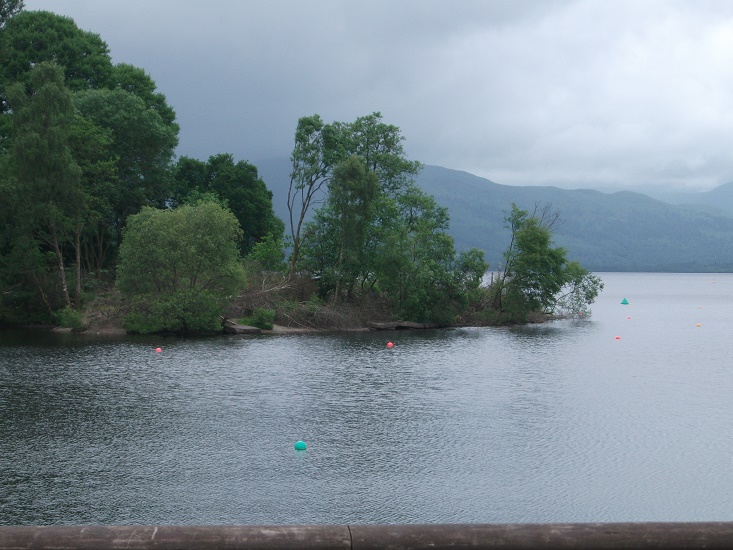The public consultation on the Loch Lomond and Trossachs National Park’s Trees and Woodland Strategy closes today (to respond go here). Following my posts about how the absence of any plans in ths strategy means that the management of “productive” conifer forests is unlikely to change (see here) and the missed opportunities for native woodland (see here), this post looks at other woodland and trees.
“Rather than referring to a ‘Forestry Strategy’, we have named this document a ‘Trees and Woodland Strategy’ in order to recognise the importance of individual trees and tree groups in the landscape
and their contribution to natural capital in the context of integrated land management in the National Park. In this document the terms‘woodland’ and ‘forest’ are used interchangeably.”
(Extract from Introduction)
Another great aspiration. Unfortunately, the Strategy proceeds to say almost nothing about what is proposed for such trees and woodland outside of forests. It is focussed on the impact that new woodland has on the landscape, while saying almost nothing about the impact of other land-uses on trees and what should happen about this. This is something that the LLTNPA has far more power to influence than forests, where the new regulator and grant provider, Scottish Forestry, is the lead public authority.
Hedges are not mentioned once in the strategy document, despite their importance as wildlife corridors and habitats and for the lowland landscape. Many larger individual trees, which are much loved by people, are found in hedges. Few remain in the lowland parts of the National Park. Nothing is said, however, about how the agricultural landscape of hedges and fields has changed or about how the National Park might protect and extend such landscapes in future. This omission is hard to understand given there are short sections about the importance of woodland habitat networks and agricultural land in the strategy. Hedges are key to both.
Related to this, the strategy says nothing about the potential conflicts between the value people place on broadleafed trees, whatever their origin, and narrow minded conservation interests or how those will be resolved. That conflict is illustrated by the felling and poisoning of the beech trees at Inchtavannach on the basis that they were not native (see here).

There is nothing either about how a minority of people continue to fell trees illegally in their own interests or what can be done to stop this. A prime example was the unlawful felling of trees last year, not long before the European Swimming Championships, at Drumkinnon Bay (see here).

While the LLTNPA responded with a Tree Protection Order to give additional protection to the remaining trees, the public have still not been told who was responsible for this felling. That might tell us something about the measures that are required to protect trees in the National Park. Amazingly, despite the introduction referring to the importance of individual trees, there is not one mention of Tree Preservation Orders in the entire Strategy and no suggestions about how they might be used to better protect individual trees from irresponsible landowners and developers.
This is part of a greater omission, a failure to discuss the impacts that built developments have on trees and what weight should be given to the protection of trees and woodland in the Planning System. While the LLTNPA’s Local Development Plan has a number of planning policies which make all the right noises about trees, in practice these appear to have counted for little when it comes to taking decision about developments. The new social housing which the Park approved for Balmaha was given the go ahead on what had been recorded as an ancient woodland site because only a government agency, the Forestry Commission, was prepared to give up its land for housing. To get round its policies, which state that ancient woodland sites should be protected, the LLTNPA ended up arguing it wasn’t an ancient woodland site of any worth.
The same sort of thinking, which values woodland second, is at the centre of the conflict over Flamingo Land and Scottish Enterprise’s Planning Application at Balloch. On the one hand Flamingo Land claiming the site is not of much worth at present and will be improved by being developed with aerial walkways, woodland activity areas, monorails and “woodland” lodges. On the other hand the public, who understand that turning woodland into a chalet park with allegedly “fun activities” will add nothing to nature or people’s enjoyment of the area. Contrast the position of the LLTNPA, which has clearly indicated to Flamingo Land and Scottish Enterprise that it is prepared to accept the development of Drumkinnon Woods, land that has never been earmarked for tourism development in the Park’s Local Development Plans, with that of the Woodland Trust. In their objection to the Planning Application (see here) they argued that the three long established woodlands on the site should be protected by 50m buffer zone. In other words not only should Drumkinnon Woods be protected from development, so should the immediately adjacent land.
Despite its opening claim that “This strategy sets out a clear, ambitious vision for how trees and woodlands are to be protected, enhanced and used within Loch Lomond & The Trossachs National Park” it says almost nothing about how woodland and trees will be “protected”, “enhanced” and “used”. There is almost nothing to say what these terms mean, apart from some general statements about the importance of woodland for “responsible access”. As a consequence there is almost nothing to inform the likely LLTNPA Board discussion about the Flamingo Land Planning Application where these issues will come to a head. The only exception I can find is the short paragraph about the importance of riparian woodlands, which may yet help preserve the banks of the River Leven from further development. The biggest gap in theTrees and Woodland strategy is therefore arguably in the area its most needed, development planning.
The Search box on the LL&TTNPA website returns no fewer than 33 results eg. Trees and Woodland strategy; NPA joins Alliance to save Scotlands Rainforests; Protected trees in the NP; Our woodland habitats ; – to name but a few. Given the current publicity being accorded by the Park to the importance of trees it will be interesting to see whether any of this is given an airing during discussion at the forthcoming LL&TTNPA Board Meeting (Mon. June 17th). Item 6 on the Agenda :- 6. Proposed Procedure for Determining Major Planning Application
2018/0133/PPP – Land At Pier Road, Ben Lomond Way And Old Luss Road, Known As West Riverside And Woodbank House, Balloch Ellen Morton / Stuart Mearns This is the first time this Application has been on the Agenda of either Board or Planning & Access Committee meetings. I sincerely hope Board Members David McCowan (representing West LL & Balloch), Professor Christopher Spry (Ecologist) and Dr Heather Reid ( a member of LL&TT Countryside Trust) in particular, will defend the woodland growing within the area of this Application – particularly Drumkinnon Woods. The LL&TTNPA mantra is after all :- “We do many things, and we have many aims – but at the heart of it is conservation.”